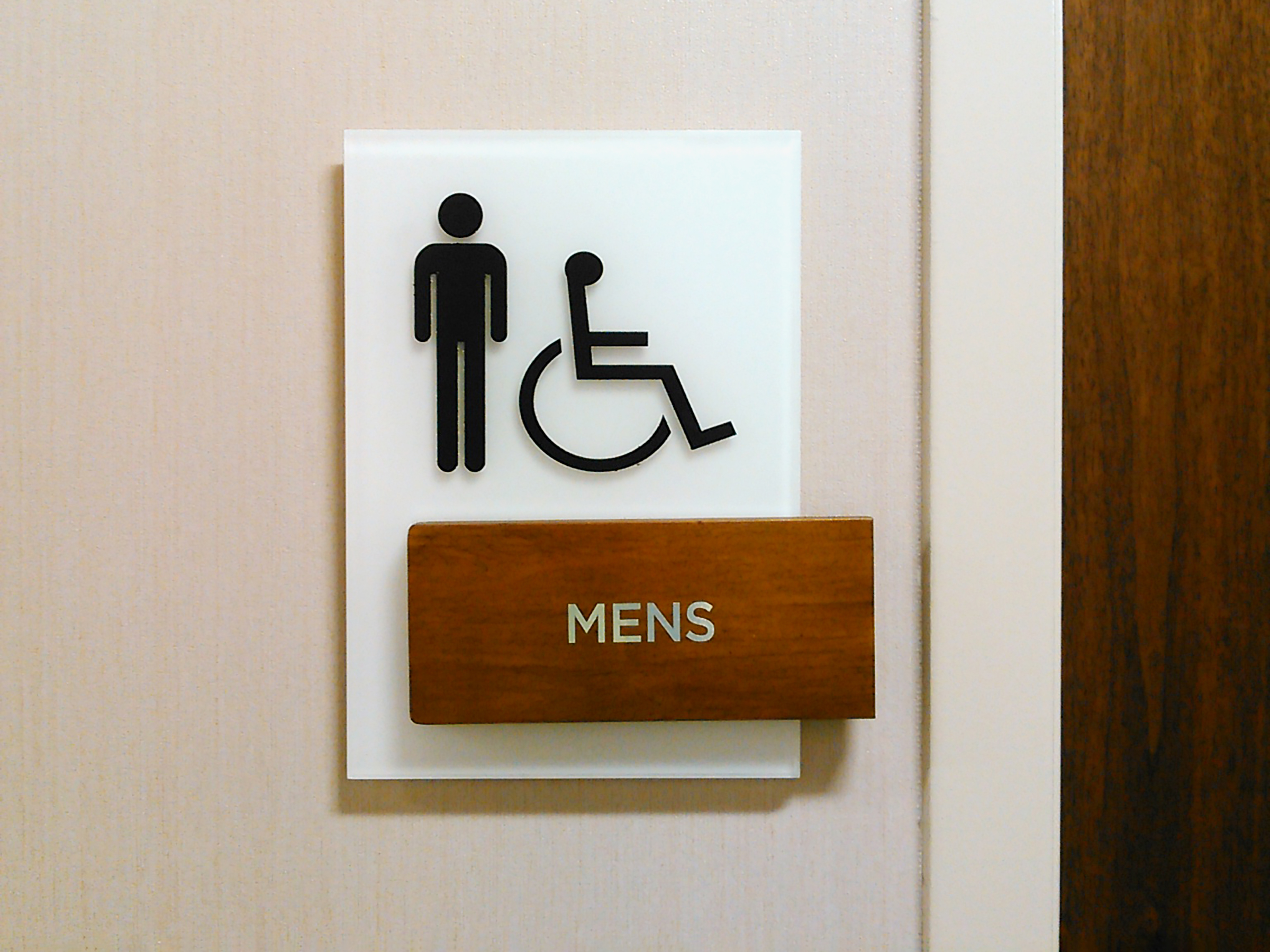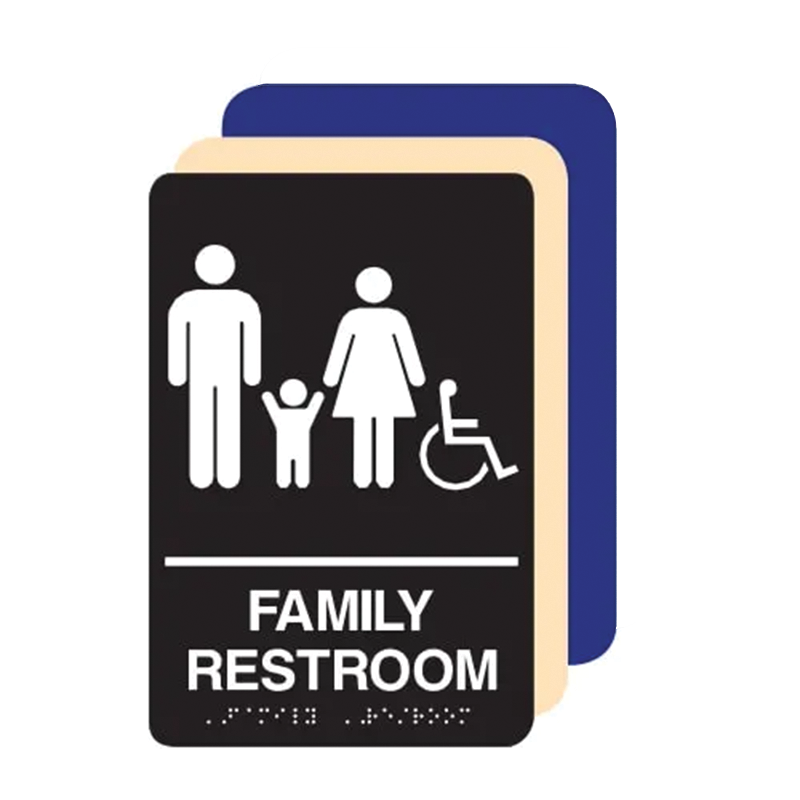Checking Out Creative Layouts for Effective ADA Signs
Checking Out Creative Layouts for Effective ADA Signs
Blog Article
Exploring the Trick Attributes of ADA Signs for Improved Availability
In the world of accessibility, ADA indicators offer as quiet yet effective allies, ensuring that spaces are comprehensive and accessible for people with specials needs. By integrating Braille and tactile components, these indications damage obstacles for the visually damaged, while high-contrast shade plans and understandable fonts provide to diverse aesthetic requirements.
Importance of ADA Compliance
Ensuring compliance with the Americans with Disabilities Act (ADA) is vital for fostering inclusivity and equal accessibility in public rooms and offices. The ADA, established in 1990, mandates that all public centers, companies, and transportation solutions suit individuals with specials needs, guaranteeing they delight in the exact same civil liberties and possibilities as others. Compliance with ADA standards not just meets lawful commitments but additionally improves an organization's track record by showing its dedication to diversity and inclusivity.
Among the crucial elements of ADA compliance is the implementation of accessible signage. ADA signs are created to ensure that people with handicaps can quickly navigate via rooms and buildings. These indications have to abide by details standards relating to dimension, typeface, shade comparison, and positioning to ensure presence and readability for all. Correctly implemented ADA signs helps remove barriers that individuals with impairments usually come across, consequently advertising their freedom and self-confidence (ADA Signs).
Furthermore, sticking to ADA policies can alleviate the risk of possible fines and lawful consequences. Organizations that stop working to follow ADA standards may encounter lawsuits or fines, which can be both monetarily burdensome and destructive to their public picture. Therefore, ADA compliance is essential to fostering a fair environment for everyone.
Braille and Tactile Aspects
The incorporation of Braille and tactile aspects into ADA signs embodies the concepts of access and inclusivity. These attributes are critical for people that are visually damaged or blind, enabling them to browse public spaces with higher independence and confidence. Braille, a tactile writing system, is essential in offering composed information in a format that can be conveniently regarded with touch. It is commonly positioned under the corresponding text on signage to guarantee that individuals can access the info without visual assistance.
Responsive components extend past Braille and include increased characters and signs. These parts are created to be noticeable by touch, enabling people to recognize space numbers, toilets, exits, and various other important locations. The ADA establishes certain standards regarding the size, spacing, and positioning of these tactile components to enhance readability and guarantee consistency across different environments.

High-Contrast Color Systems
High-contrast color schemes play a crucial role in boosting the visibility and readability of ADA signage for individuals with visual disabilities. These schemes are vital as they optimize the difference in light reflectance in between message and background, guaranteeing that indications are conveniently noticeable, also from Check This Out a distance. The Americans with Disabilities Act (ADA) mandates the use of details color contrasts to suit those with limited vision, making it a crucial aspect of compliance.
The effectiveness of high-contrast colors depends on their capability to stand apart in different lights conditions, including poorly lit environments and areas with glare. Usually, dark text on a light history or light message on a dark background is utilized to accomplish ideal comparison. For example, black text on a white or yellow history gives a plain visual difference that aids in quick recognition and comprehension.

Legible Fonts and Text Size
When thinking about the style of ADA signs, the selection of clear font styles and suitable text size can not be overstated. These aspects are critical for making sure that indicators are accessible to people with visual disabilities. The Americans with Disabilities Act (ADA) mandates that typefaces should be not italic and sans-serif, oblique, script, highly ornamental, or of uncommon type. These demands aid make certain that the message is easily legible from a range which the characters are appreciable to diverse audiences.
According to ADA standards, the minimum text height ought to be 5/8 inch, and it ought to increase proportionally with checking out range. Consistency in text dimension contributes to a cohesive visual experience, aiding individuals in browsing environments efficiently.
Additionally, spacing between letters and lines is important to clarity. Ample spacing protects against characters from appearing crowded, boosting readability. By adhering to these standards, designers can considerably enhance accessibility, making certain that signs offers its desired function for all individuals, regardless of their aesthetic capabilities.
Efficient Positioning Methods
Strategic placement of ADA signage is essential for optimizing access and ensuring conformity with legal requirements. Correctly positioned indicators assist individuals with specials needs properly, facilitating navigation in public areas. Key considerations consist of height, closeness, and visibility. ADA guidelines stipulate that indicators should be placed at a height between 48 to 60 inches from the ground to ensure they are within the line of view for both standing and seated people. This conventional elevation range is critical for inclusivity, making it possible for wheelchair customers and individuals of differing heights more helpful hints to accessibility information easily.
Furthermore, indications must be put nearby to the latch side of doors to enable simple identification prior to entrance. Uniformity in indication positioning throughout a facility enhances predictability, lowering complication and enhancing total customer experience.

Verdict
ADA indicators play an important duty in promoting ease of access by integrating functions that address the needs of people with disabilities. These components jointly promote a comprehensive environment, emphasizing the relevance of ADA compliance in guaranteeing equivalent gain access to for all.
In the world of accessibility, ADA indications serve as silent yet powerful allies, ensuring that rooms are comprehensive and accessible for individuals with handicaps. The ADA, established in 1990, mandates that all public centers, employers, and transport services suit individuals with impairments, guaranteeing they enjoy the same legal rights and opportunities as others. ADA Signs. ADA signs are developed to make sure that people with handicaps can quickly browse through areas and buildings. ADA standards state that signs must be placed at a height in between 48 to 60 inches from the ground to ensure they are within the line of sight for both standing and seated individuals.ADA indications play a crucial role in advertising ease of access by integrating functions that attend to the demands of individuals with disabilities
Report this page